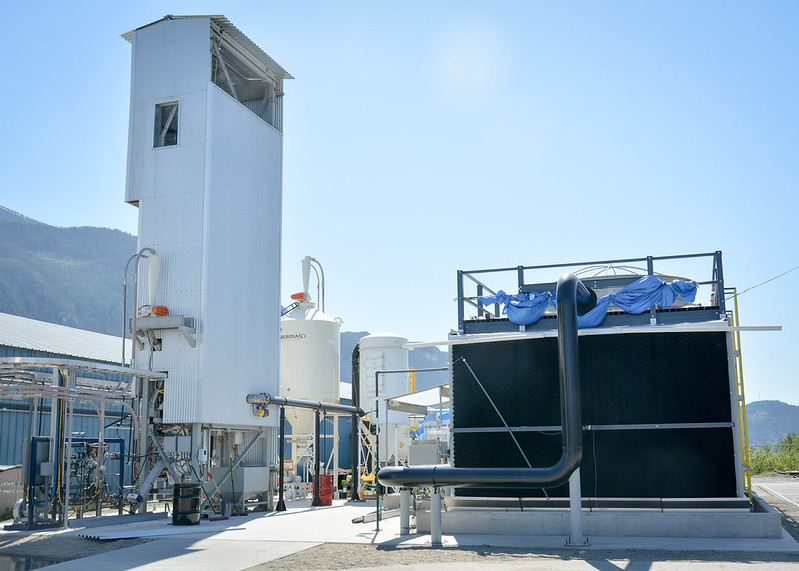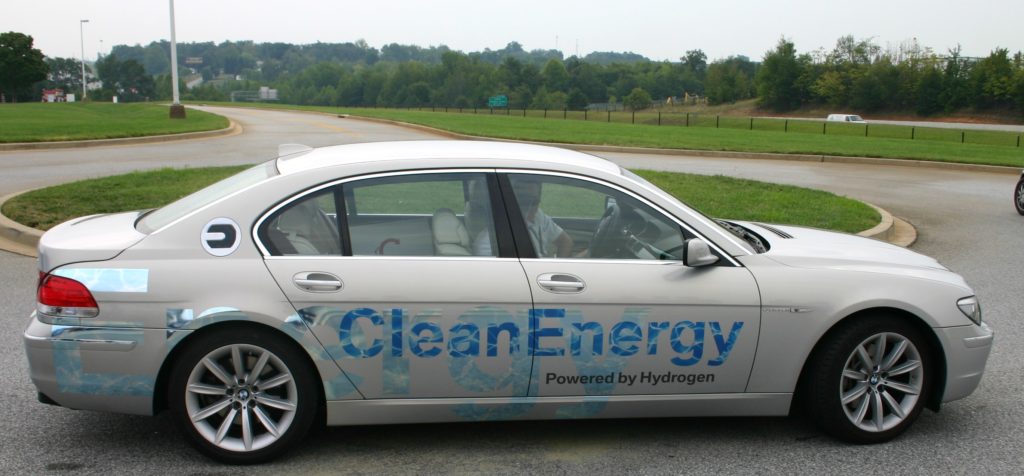
I’m sure you’ve heard ‘hydrogen energy’ being proffered as the best way for us to decarbonize our energy production and transportation systems, and hence save the planet. But there are various types of hydrogen energy. You’ve probably noticed that brown, gray, blue, and green hydrogen are becoming more commonplace in energy vernacular, but there’s also pink, turquoise, and yellow hydrogen!

But before we dive into this veritable energy rainbow, let’s start with some basics. Hydrogen is the most abundant element in the Universe, and also the simplest and lightest element on the Periodic Table, with only one proton per atom of hydrogen. It occurs naturally on Earth only as a compound with other elements, to take liquid, gas, or a solid form. When it’s separated from these other elements in molecules it can be used as an energy source, in either liquid or gas form. And this energy can be electricity or fuel.
It takes more energy to produce hydrogen (separate it from the other molecular elements) than it provides. And it has the lowest energy content by volume (about 4 times less than gasoline), but the highest energy content by weight of any common fuel (approximately 3 times more than gasoline) – which leads to its use as a rocket fuel and in some fuel cells producing electricity on certain spacecraft.
So back to that color palette. Natural hydrogen is actually colorless, so the color labels are applied to denote the process or original energy source used to produce (separate) the hydrogen. Some of the color labels are pretty self explanatory, while others are not. But bear in mind that there are no set guidelines or naming conventions, so sometimes the definitions for each color may evolve over time, and may vary from country to country.
Black or Brown Hydrogen
These two are almost the same thing: hydrogen obtained from burning coal. Whether the coal is black (bituminous) or brown (lignite) determines the color label. The bottom line is that production of hydrogen this way is excessively environmentally damaging. The gasification of the coal (heating to temperatures of above 700°C without combustion) creates syngas. The hydrogen can then be separated from the other elements using absorbers and membranes. But….this process also creates carbon dioxide and carbon monoxide. Neither of these gases can be captured and used, so are just being emitted into the atmosphere.
Gray Hydrogen
This is currently the most common form of hydrogen production and comes from a process called steam methane reformation. A catalyst is used to react methane with high temperature steam, resulting in hydrogen, carbon monoxide, and carbon dioxide. There’s then a subsequent process, where carbon monoxide, steam, and a catalyst react to produce more hydrogen and carbon dioxide. And finally the carbon dioxide is removed to leave only hydrogen. The CO2 by-product of this process is thought to be in the region of 830 million metric tons each year. For perspective, that’s equivalent to the emissions of the UK and Indonesia combined.
Blue Hydrogen

In this process, once the hydrogen has been produced using the steam reformation discussed above, the CO2 is captured and stored using a CCS facility (Carbon Capture and Storage). But as is becoming more commonly appreciated, CCS is somewhat of a pipedream, being that the tech is years away from reaching adequate scale to have a positive impact on the CO2 we produce, and the extremely high cost of building the facilities.
Green Hydrogen
The clue is in the title: this is the one we must aim for! Green hydrogen is produced through an electrochemical reaction which splits water into its two components: hydrogen and oxygen. The electrolysers are powered by renewable energy sources, thereby producing hydrogen with zero carbon dioxide emissions during the process.
Pink Hydrogen
This is sometimes called purple hydrogen or red hydrogen too. All three colors refer to hydrogen produced by the power of nuclear energy, but through slightly different processes. With the French passion for nuclear power, it’s no surprise that President Macron has labeled pink hydrogen as a “primary asset” for the country. But of course nuclear power is both an emotive and politically charged subject.
Turquoise Hydrogen
This is the newest color on the spectrum and is still in experimental stages, yet to be scaled up. A process called methane pyrolysis is used to break down methane into its components of hydrogen and solid carbon, also called carbon black. This powder can be used in printing, construction, or the electronics industry. Alternatively, solid carbon is easier to store than gas. But while on the surface this seems to be a low-carbon technique, further research is required to ensure that the heat required and methane itself don’t tip it into the carbon intensive category of energy production.
Yellow Hydrogen
Another newcomer to the rainbow, this most commonly refers to hydrogen produced by solar powered electrolysis. But the term can also be used to describe hydrogen produced through electrolysis powered from a combination of sources, both renewable and fossil-based.
White Hydrogen
This is pure, naturally occurring geological hydrogen. Currently we don’t have strategies to extract and exploit this resource.
So which color, or process, is going to be the best to use for our future energy needs? It seems clear that green hydrogen, sometimes now called ‘clean’ hydrogen is the answer. But the path to scaling this isn’t easy, or cheap. Current costs in the US put green hydrogen at about 3 times as much as natural gas. But as we know from the dramatic reduction in renewable energy costs over the last 5 years, we can expect to see this cost drop rapidly, soon, but not right now. McKinsey has reported that by 2030, in the United States, there could be approximately 700,000 jobs and $140 Billion in revenue from hydrogen, to meet the expected demand of 17 million metric tons per year (for perspective, the current market is 11 million metric tons per year).

There are lots of exciting developments around green hydrogen, and how to produce it effectively and efficiently. One such project was discussed by our guest author, Len Rosen, when he explored the use of unrecyclable plastic and other solid municipal waste as the feedstock for the production of green hydrogen. There are several companies in California, the UK, and Europe using gasification of waste to make clean hydrogen.
We think that pink/purple/red hydrogen may also have a place in the future mix of hydrogen production, but of course absolute, utmost care needs to be exercised. Two things are for certain: the need to move away from grey and brown/black hydrogen as quickly as possible; and the caution needed when blue hydrogen is purported as being a solution.



